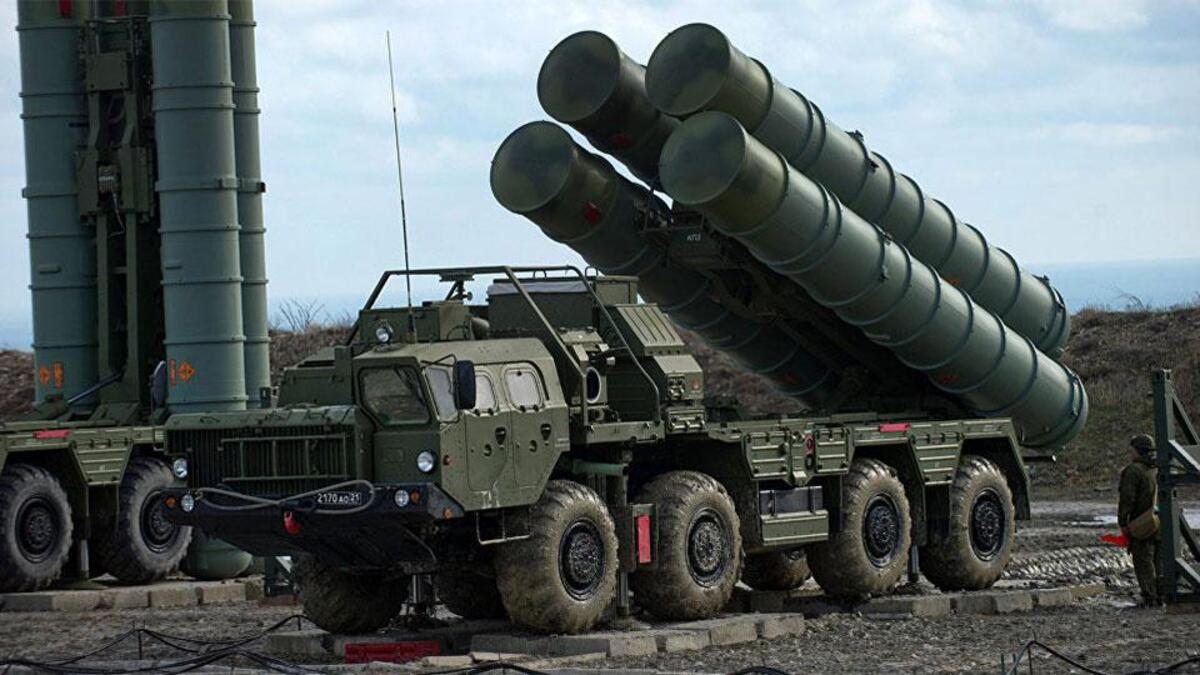Belgorod Airport was rocked by several explosions on October 17, apparently due to an air raid conducted by the Ukrainian Air Force that seems to have overwhelmed the Russian air defense systems.
Several images and videos of the incident circulating on social media show air defense rockets being fired to repel Ukrainian missiles while simultaneously having explosions occurring on the ground.
In a Telegram post, the Ukrainian armed forces confirmed the strikes, saying, “Meanwhile in Belgorod… Locals counted 16 explosions in the area of the airport.”
Belgorod in Russia today, which is gradually turning into a frontline city in this war. Reports that the airport has been heavily damaged in strikes this morning. pic.twitter.com/tEds7Tscu6
— Matthew Luxmoore (@mjluxmoore) October 16, 2022
The Governor of Belgorod Oblast, Vyacheslav Gladkov, also confirmed the explosions in the city and that the air defense systems had been activated. Gladkov reported that three people died, and another four were injured in the missile attack.
Failure Of S-300 Or S-400?
The attacks appear to have been conducted by the Ukrainian Air Forces using the US-made AGM-88 HARM (High-speed Anti-radiation Missiles), based on the images showing the fragments of this missile reportedly found near the Belgorod airport.
Evidence of HARMs being used in the #Belgorod attack. Would strongly suggest this was an air attack by Ukrainian Air Force.
Per Telegram channel Zhest' Belgorod:https://t.co/ndL2XBuNcE
(h/t @ameliairheart) pic.twitter.com/TI8ppHOQQD
— Evergreen Intel (@vcdgf555) October 16, 2022
Experts suggest the attack was targeted at Russia’s S-300 surface-to-air missile batteries that had reportedly shot down two Ukrainian fighter jets recently.
Tendar, a social media account that monitors the conflict, tweeted: “That would point to a strike against radar installations or mobile radar vehicle, presumably part of the air defense.”
First found fragments of the missiles which hit the Belgorod airport seem to point to AGM-88 HARM missiles. That would point to a strike against radar installations or mobile radar vehicle, presumably part of the air defense. #Ukraine #Belgorod #Russia pic.twitter.com/D31HKTxyNH
— (((Tendar))) (@Tendar) October 16, 2022
According to reports, two Ukrainian fighter jets, the Su-27 and Su-24, were shot down a few days ago in Belgorod region by an S-300V4 system at an extremely long distance of 217 kilometers, surpassing the 150 kilometer-range kill purportedly scored by a Russian S-400 system against a Ukrainian Su-27 over Kyiv in March.
Notably, the interceptor missile said to have been used to shoot the two Ukrainian fighter jets was the 48N6DM missile. However, the 48N6DM was the first missile inducted for the S-400 air defense system.
Nevertheless, the remains of a 48N6DM missile have been reportedly found in the Grayvoronsky District of Belgorod Oblast in Russia, which is only about 15-20 kilometers from the border with Ukraine.
The remains of a Russian S-400 48N6DM missile in the Grayvoronsky District of Belgorod.https://t.co/5o3Q3fAg7u pic.twitter.com/DlUCHUb9cz
— Rob Lee (@RALee85) October 15, 2022
Also, Konrad Muzyka, a defense analyst specializing in the Russian and Belarusian Armed Forces, reported in April that an S-400 battery was stationed near Belgorod.
We have identified an S-400 battery near Belgorod. More in today's issue of Ukraine Conflict Monitor. https://t.co/sfCDHfCvWC
— Konrad Muzyka – Rochan Consulting (@konrad_muzyka) April 13, 2022
Therefore, the Ukrainian air raids over Belgorod Airport could just as much be the failure of the world-famous S-400 air defense system as it is of the S-300.
Ukraine Claimed Destroying S-400 System
In September, the Ukrainian Armed Forces claimed to have destroyed two S-400 launchers and an S-300 radar, among other Russian military equipment, in South Ukraine.
The Operational Command ‘South’ of the Armed Forces of Ukraine (AFU) claimed without providing visual evidence or specifying exactly these S-400 launchers were located.

However, according to a US Navy SEAL veteran and a conflict correspondent, Chuck Pfarrer, the two S-400 launchers in question were located in Kherson. At least one of them was identified by Ukrainian forces on September 5 when it was moved to the vicinity of Hola Prystan.
There has been no documented instance of the S-400 launchers deployed in the Kherson region, and considering the S-400 system has an operational missile range of up to 400 kilometers and the surveillance range of up to 600 kilometers, it is doubtful that the Russian military would need to deploy their S-400 missile launchers inside Ukraine.
However, in July, Ukrainian forces reportedly destroyed a Russian 48Ya6-K1 Podlet-K1 low-altitude radar which is said to be used for the S-400 air defense system.
Ukraine destroyed a Russian 48Ya6-K1 Podlet K1 low-altitude radar in Lazurne, Kherson Oblast.https://t.co/qN0yjxzqz2https://t.co/znsMZ60rrLhttps://t.co/SNgIX9Qp2X pic.twitter.com/cp5E0YXMdc
— Rob Lee (@RALee85) July 20, 2022
The Podlet-K1 radar was reportedly stationed in the Lazurne area of the Kherson Oblast, located 50 kilometers south of Hola Prystan, on the coast of the Black Sea. It was probably the first documented instance of the radar’s presence in Ukraine.
So, it would appear that the S-400 launchers in question could have been intended for firing the 9M96E and 9M96E2 ground-to-air missiles, which have ranges of 40 and 120 kilometers, respectively.
Together with the Podlet-K1 radar, which has a maximum detection range between 200-300 kilometers, the 9M96E and 9M96E2 could have been used to destroy low-flying medium-range airborne targets.
That said, this is an extensive propaganda win for Ukraine against Russia, as the latest videos of the bombardment of the Belgorod Airport seem to show the failures of the Russian air defense systems while in action.
However, experts caution against conclusions based on the videos and images.
“Explosions don’t necessarily mean successful strikes. Once fired, a HARM will explode, but not necessarily on the target,” said Squadron Leader Vijainder Thakur, Veteran Indian Air Force (IAF) fighter pilot and an analyst/columnist with The EurAsian Times.
As for the Russian air defense systems, Thakur said, “It would be wrong to conclude that a weapon system is worthless if it’s struck in combat.”
- Contact the author at tanmaykadam700@gmail.com
- Follow EurAsian Times on Google News




